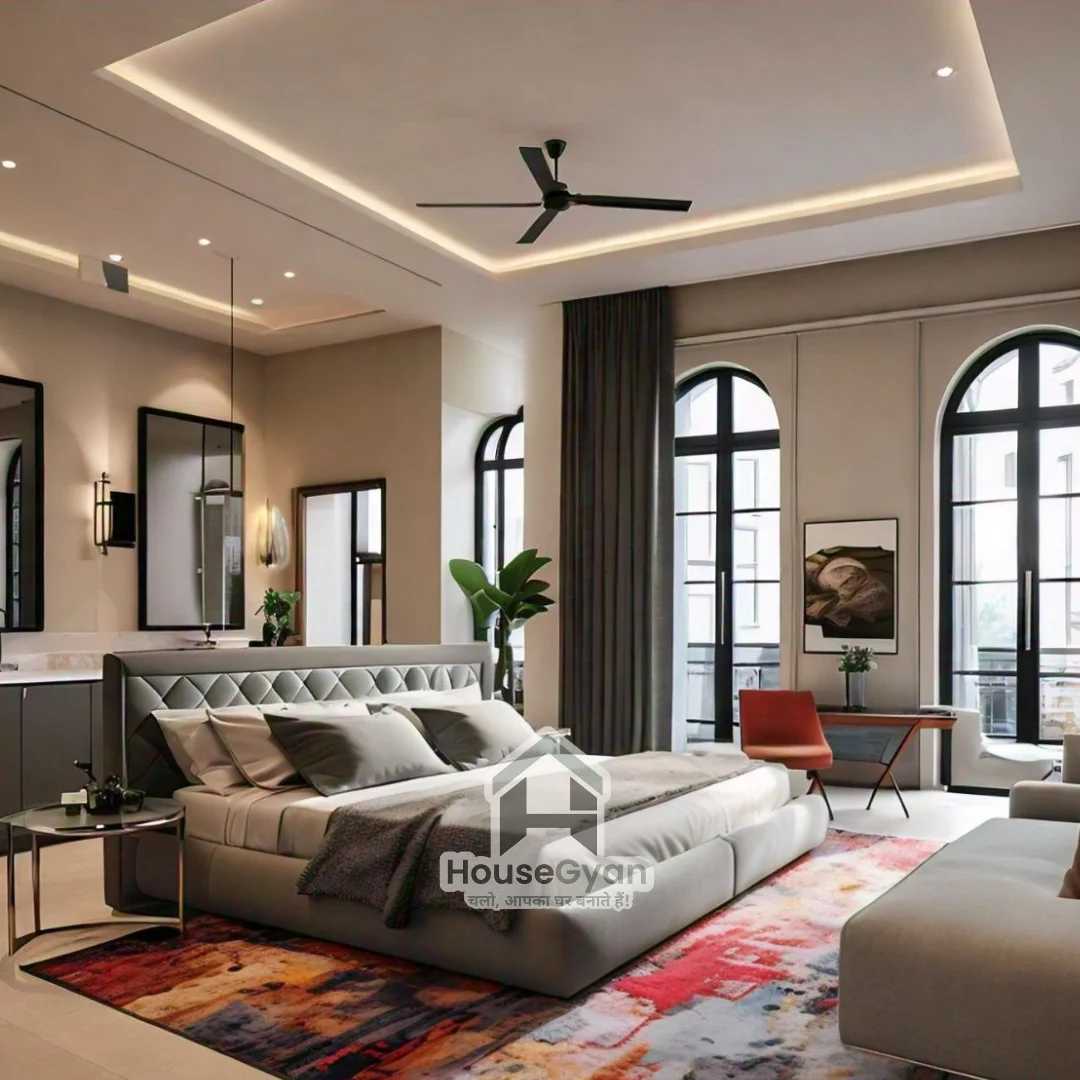
8th, Oct, 2024
How to Arrange Furniture According to Vaastu Shastra?
Vastu Shastra, an ancient Indian science that combines architecture with holistic living, provides guidelines for arranging furniture in a way that balances energy and enhances the flow of positive vibes within a space. Applying Vastu principles to your home can lead to a more peaceful, prosperous, and harmonious environment. Let’s explore in detail how to incorporate Vastu Shastra when choosing and arranging furniture in your home. Before you start selecting and arranging furniture, it’s crucial to understand some basic Vastu principles: Material Matters: Wood: Natural materials like wood are considered auspicious in Vastu. Wooden furniture is believed to attract positive energy and promote a sense of grounding. Metal and Glass: While metal and glass can be used, they should be balanced with wood or other natural materials to avoid excessive cold or harsh energy. Shapes and Sizes: Rectangular and Square Shapes: Regular geometric shapes like rectangles and squares are preferred for furniture such as dining tables, beds, and sofas. These shapes promote stability and balance. Avoid Irregular Shapes: Irregular or sharp-edged furniture can create disturbances in the energy flow, leading to stress and discomfort. Placement Principles: Free Flow of Energy: Furniture should be placed in a way that does not obstruct movement or the flow of energy in the room. Ensure that pathways are clear and that furniture does not block doorways. Avoid Sharp Edges: Avoid placing furniture with sharp edges pointing toward seating or sleeping areas, as these can create negative energy. Balance and Symmetry: Symmetrical Arrangement: Arrange furniture symmetrically to create a sense of harmony and balance in the space. Symmetry in furniture placement is particularly important in living rooms and bedrooms. Colour Considerations: Light and Neutral Colours: Choose light, neutral colours for your furniture to invite calmness and positivity. Dark or overly vibrant colours should be used sparingly, as they can create a heavy atmosphere. The bedroom is a personal space where relaxation and rejuvenation take center stage. Vastu-compliant furniture arrangement in the bedroom can significantly enhance the quality of your rest and overall well-being. Bed Placement: Headboard Direction: The bed should be placed with the headboard facing south or east. This orientation is believed to promote restful sleep and reduce stress. Bed Positioning: The bed should not be placed directly under a beam, as this can lead to sleep disturbances. Also, avoid placing the bed directly opposite the bedroom door. Avoid Mirrors Facing the Bed: Negative Energy: Mirrors should not face the bed, as they can reflect negative energy and lead to disturbed sleep. If a mirror is present, cover it at night. Wardrobe Placement: Southwest Corner: Place wardrobes in the southwest corner of the bedroom to enhance stability and bring a sense of security to the household. Mirrored Wardrobes: If your wardrobe has mirrors, ensure they do not reflect the bed, as this can create anxiety and restlessness. Additional Tips: Side Tables: Place side tables on both sides of the bed for balance. Lighting: Opt for soft, ambient lighting to create a soothing atmosphere. The living room is the heart of the home, where family and guests gather. A Vastu-compliant living room can foster positive interactions and create a welcoming environment. Sofa and Seating Arrangement: Direction: Place sofas and chairs so that they face east or north. This positioning encourages good social interactions and creates a lively atmosphere. Avoid Backing the Door: Avoid placing seating with the back to the entrance, as it is believed to create a sense of insecurity. Central Area: Open Space: Keep the central area of the living room open and clutter-free to allow the free flow of energy. This open space symbolizes openness and prosperity. Avoid Obstacles: Ensure that no furniture blocks the entrance or the pathways within the living room. Television and Electronics: Southeast Corner: Place the television in the southeast corner of the living room. This direction is ruled by Agni (the fire element) and is suitable for electronic devices. Avoid North-East: Avoid placing electronics in the northeast corner, as it can disrupt the positive energy flow. Decorative Elements: Artwork: Place uplifting and positive artwork on the east or north walls to enhance the room’s energy. Mirrors: If you place mirrors in the living room, ensure they reflect something beautiful, like a garden or a pleasing view. Wardrobes are essential for storage but also play a significant role in the energy dynamics of a room. Here’s how to place them according to Vastu: Southwest Corner: Stability and Support: Place wardrobes in the southwest corner of the room. This placement is believed to bring stability, grounding, and support in life. Wardrobe Doors: Smooth Operation: Ensure that wardrobe doors open smoothly without creaking. Creaking doors are considered to bring negative energy into the space. Mirrored Wardrobes: Avoid Reflecting the Bed: If your wardrobe has mirrors, they should not reflect the bed, as this can cause disturbed sleep and anxiety. Height Considerations: Tall Wardrobes: If you have tall wardrobes, they should be placed against a wall to avoid dominating the room’s energy. The dining room is where the family comes together to share meals, making it an important area for fostering harmony and togetherness. Here’s how to arrange your dining room furniture according to Vastu: Dining Table Shape: Rectangular or Square: A rectangular or square-shaped dining table is ideal, as it promotes balance and ensures that everyone seated is at an equal level. Avoid Circular Tables: While circular tables are stylish, they are less recommended in Vastu as they can lead to instability in relationships. Dining Table Placement: West or North Direction: Place the dining table in the west or north section of the room. This placement is considered auspicious and promotes harmony during meals. East-Facing Head: The head of the family should ideally sit facing east while dining, as it is considered the direction of prosperity and health. Seating Arrangement: Balanced Arrangement: Ensure that the number of chairs around the dining table is even, as odd numbers can create imbalance. Avoid Backing Windows: Chairs should not back large windows or doors, as this can cause energy to escape. Additional Considerations: Artwork: Place calming and positive artwork in the dining room to enhance the dining experience. Lighting: Soft, warm lighting is preferred to create a pleasant atmosphere. The study room is where focus and concentration are paramount. Vastu principles can help in arranging furniture to maximize productivity and learning. Study Table Placement: Northeast or East Direction: Place the study table in the northeast or east direction of the room. The person studying should face north or east, as these directions are associated with clarity and concentration. Solid Wall Behind: Ensure that the study table is placed with a solid wall behind it, symbolizing support and stability in learning. Bookshelves: Southwest or South Direction: Place bookshelves in the southwest or south direction. Avoid placing them above the study table to prevent a sense of burden. Organized Storage: Keep the bookshelf organized and clutter-free to promote clear thinking. Chair Selection: High-Backed Chair: Choose a high-backed chair for the study room to provide adequate support and enhance focus. Positioning: The chair should not face the door directly but should be placed where the person sitting can see the entrance. Lighting: Natural Light: Maximize natural light in the study room, as it boosts energy levels and improves concentration. Task Lighting: Use focused task lighting on the study table to avoid strain and shadows. Colours play a vital role in Vastu Shastra, influencing the mood, energy, and ambiance of a space. The right colours can enhance positivity and balance in your home. Light and Soothing Colours: Calmness and Positivity: Light colours like white, cream, and pastel shades are recommended for furniture. These colours are soothing and promote calmness and positivity. Wood Tones: Natural wood tones are highly preferred in Vastu as they represent growth, warmth, and grounding. Avoid Dark Colours: Heavy Atmosphere: Dark colours should be used sparingly, as they can create a heavy and oppressive atmosphere. If used, balance them with lighter shades. Colour Selection by Room: Living Room: Opt for warm, welcoming colours like beige, soft yellow, or light brown. Bedroom: Use cool, calming colours like light blue, lavender, or soft green to promote restful sleep. Dining Room: Earthy tones like light brown or cream can enhance the appetite and create a cozy environment. Furniture Accents: Cushions and Throws: Use cushions and throws in vibrant colours as accents to add energy without overwhelming the space. Curtains and Drapes: Choose light, flowing fabrics in soothing colours to allow the free flow of energy. To fully align your home with Vastu principles, consider these additional tips for furniture placement: Avoid Clutter: Energy Flow: Clutter disrupts the natural flow of energy, leading to stress and chaos. Keep your home tidy and organized to maintain positive energy. Storage Solutions: Invest in well-organized storage solutions to keep clutter at bay. Symmetry in Arrangement: Balance and Harmony: Symmetrical furniture arrangements create a sense of balance and harmony, essential for a peaceful home environment. Aesthetic Appeal: Symmetry also enhances the aesthetic appeal of a room, making it more inviting. Heavy Furniture Placement: South or West Direction: Place heavy furniture like wardrobes, cabinets, and large sofas in the south or west direction. This placement symbolizes stability and helps in grounding the space. Stability and Strength: Heavy furniture in these directions enhances the stability and strength of the occupants. Personal Touch: Personal Items: Incorporate personal items like family photos, mementos, or artwork according to Vastu guidelines. These should be placed in areas that enhance positive energy, like the east or north walls. Vastu Symbols: Consider adding Vastu symbols like a Swastika, Om, or Kalash in strategic locations to attract auspicious energies. By adhering to these detailed Vastu Shastra principles for furniture, you can create a living space that is not only aesthetically pleasing but also imbued with positive energy, balance, and harmony. Following these guidelines will help you foster a home environment conducive to health, happiness, and prosperity for all its inhabitants.Understanding Vastu Shastra for Furniture
Principles of Vastu Shastra to Keep in Mind While Choosing Furniture
Bedroom Furniture Vastu
Living Room Furniture Vastu
Wardrobe Placement Vastu
Dining Room Furniture Vastu
Study Room Furniture Vastu
Significance of Vastu-Compliant Furniture Colours
Vastu Tips For Furniture: Things To Keep In Mind











